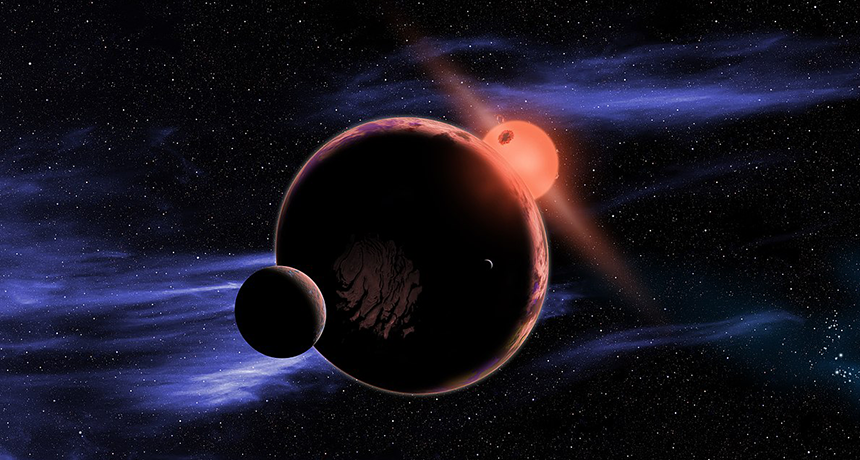degree (in geometry) A unit of measurement for angles. Each degree equals one three-hundred-and-sixtieth of the circumference of a circle.
exoplanet Short for extrasolar planet, it’s a planet that orbits a star outside our solar system.
mass A number that shows how much an object resists speeding up and slowing down — basically a measure of how much matter that object is made from.
Milky Way The galaxy in which Earth’s solar system resides.
red dwarf A type of smallish star that is relatively cool (and hence emits reddish light). Red dwarfs are the most common size stars in the Milky Way.
star The basic building block from which galaxies are made. Stars develop when gravity compacts clouds of gas. When they become dense enough to sustain nuclear-fusion reactions, stars will emit light and sometimes other forms of electromagnetic radiation. The sun is our closest star.
sun The star at the center of Earth’s solar system. It’s an average size star about 26,000 light-years from the center of the Milky Way galaxy. Also a term for any sunlike star.
telescope Usually a light-collecting instrument that makes distant objects appear nearer through the use of lenses or a combination of curved mirrors and lenses. Some, however, collect radio emissions (energy from a different portion of the electromagnetic spectrum) through a network of antennas.








